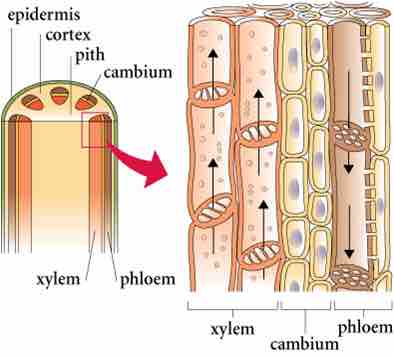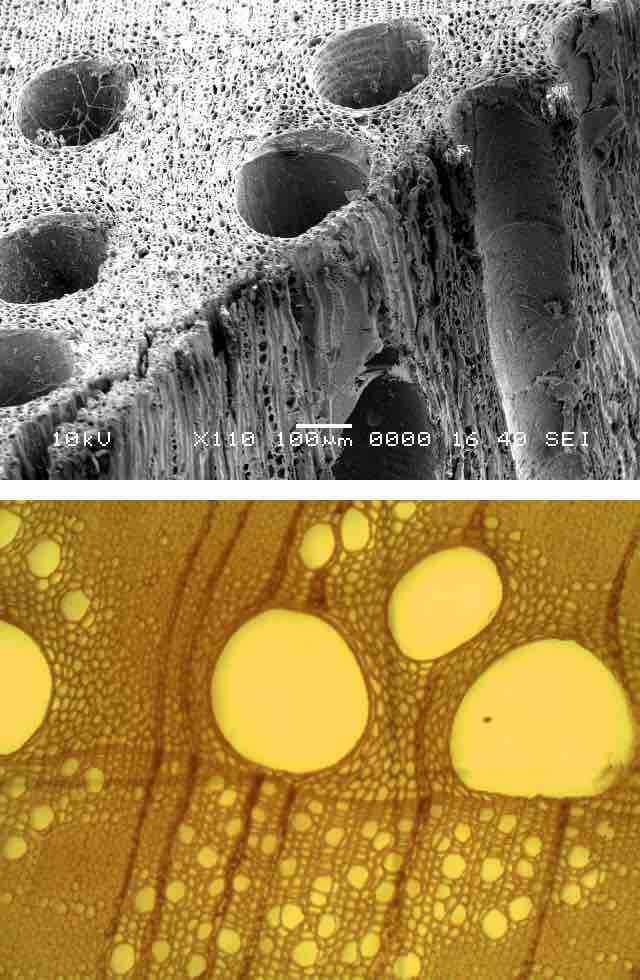Vascular Tissue: Xylem and Phloem
The first fossils that show the presence of vascular tissue date to the Silurian period, about 430 million years ago. The simplest arrangement of conductive cells shows a pattern of xylem at the center surrounded by phloem. Together, xylem and phloem tissues form the vascular system of plants .

Xylem and phloem
Xylem and phloem tissue make up the transport cells of stems. The direction of water and sugar transportation through each tissue is shown by the arrows.
Xylem is the tissue responsible for supporting the plant as well as for the storage and long-distance transport of water and nutrients, including the transfer of water-soluble growth factors from the organs of synthesis to the target organs. The tissue consists of vessel elements, conducting cells, known as tracheids, and supportive filler tissue, called parenchyma . These cells are joined end-to-end to form long tubes. Vessels and tracheids are dead at maturity. Tracheids have thick secondary cell walls and are tapered at the ends. It is the thick walls of the tracheids that provide support for the plant and allow it to achieve impressive heights. Tall plants have a selective advantage by being able to reach unfiltered sunlight and disperse their spores or seeds further away, thus expanding their range. By growing higher than other plants, tall trees cast their shadow on shorter plants and limit competition for water and precious nutrients in the soil. The tracheids do not have end openings like the vessels do, but their ends overlap with each other, with pairs of pits present. The pit pairs allow water to pass horizontally from cell to cell.

Tracheids and vessel elements
Tracheids (top) and vessel elements (bottom) are the water conducting cells of xylem tissue.
Phloem tissue is responsible for translocation, which is the transport of soluble organic substances, for example, sugar. The substances travel along sieve elements, but other types of cells are also present: the companion cells, parenchyma cells, and fibers. The end walls, unlike vessel members in xylem, do not have large openings. The end walls, however, are full of small pores where cytoplasm extends from cell to cell. These porous connections are called sieve plates. Despite the fact that their cytoplasm is actively involved in the conduction of food materials, sieve-tube members do not have nuclei at maturity. The activity of the sieve tubes is controlled by companion cells through plasmadesmata.